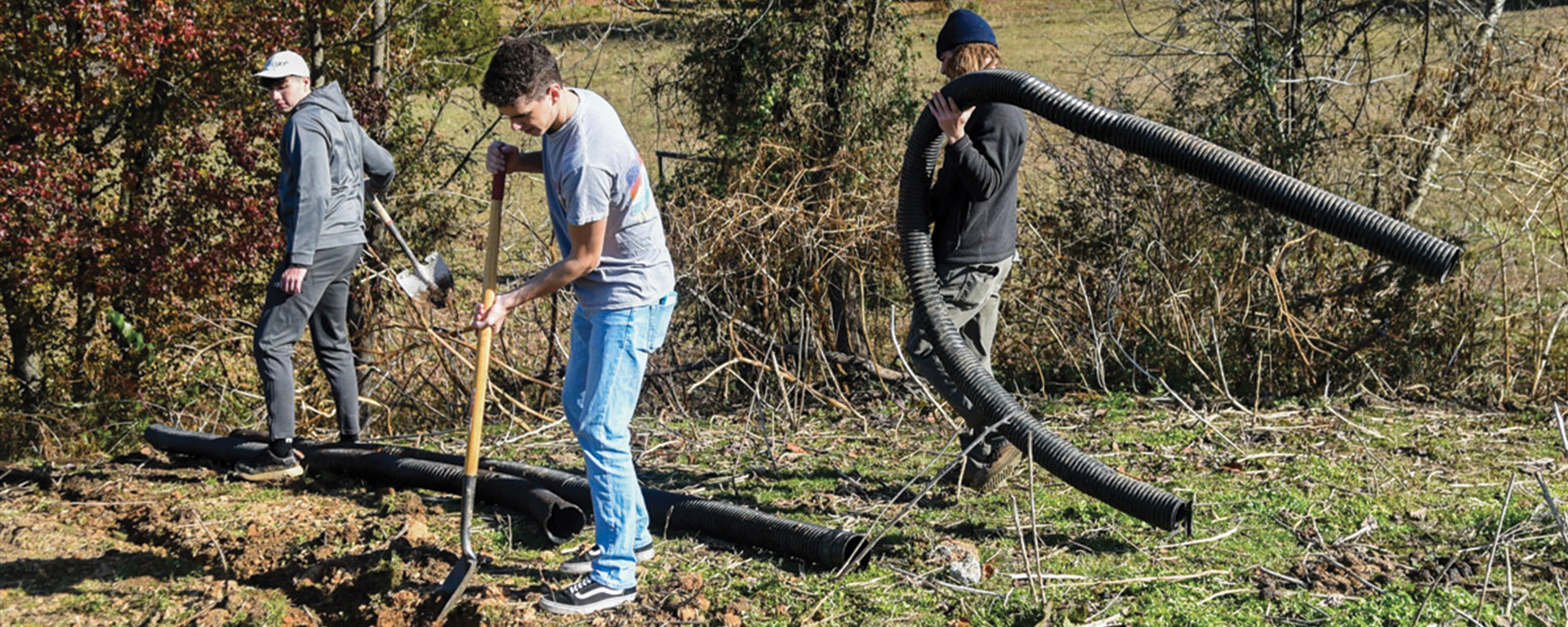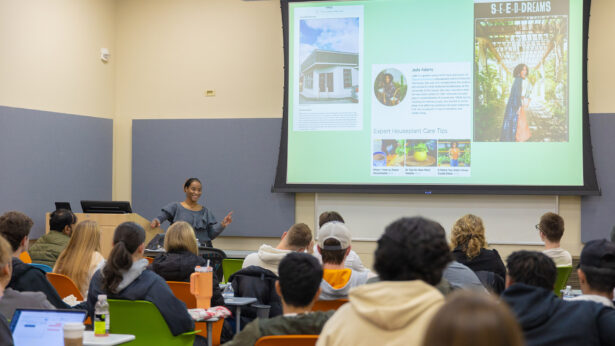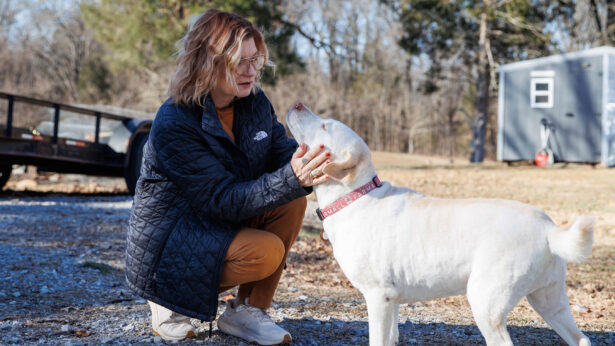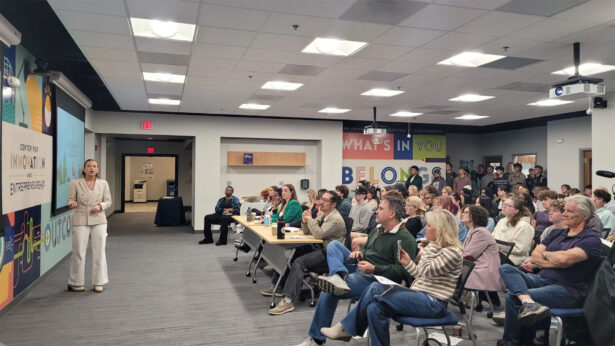The shovel chunks into the ground with a dull thud, followed by a sandpapery scraping sound. The blade slices down only an inch or two in the rock-filled clay.
“Man, this dirt is hard,” says Brylee Burns as he jams his foot onto the shovel again, trying to drive it into
the ground.
It only digs in about an inch.
Digging in the dirt is not an unfamiliar task for Burns, a sophomore in mechanical engineering at UT Chattanooga. During the fall 2021 semester, he and four other students dug a 200-foot trench alongside the barn at Tri-State Therapeutic Riding Center, which provides horses for rehabilitation exercises to clients from kindergarten to senior citizens.
The students also built an apparatus that directs rainwater from the barn’s roof into a 300-gallon cistern that feeds a water trough for the center’s horses. Excess water from the roof runs into pipes that have been laid in the trench, carrying it away from the barn to dump it into a culvert about 50 feet beyond. Downspouts from the roof have been tied into the pipes to carry the water away, too.
The physical labor came after researching the best way to handle the issues plaguing the center in McDonald, Tennessee.
“Before, there was three inches of standing water,” says Alex Butler, a senior in mechanical engineering who’s leading the project. “The ground that we’re walking on now, you couldn’t even walk on it. You’d sink into it about an inch or two inches.”
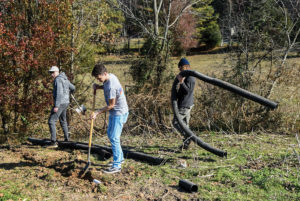
Working with Tri-State was just one of several projects taken on by students in “Introduction to Engineering Design,” a course in the Department of Mechanical Engineering.
“I pick the projects, and the students sign up to the ones that interest them,” says Cecelia Wigal, who teaches the course. “They get the problem and go out on their very own—I don’t go out—and meet with the client.”
In a second project at Tri-State, five students built a wooden bull—complete with a plastic bull head—on a sensory trail that meanders through nearby woods. As part of the center’s Reinbow Rehabilitation Program, horseback riders try to “lasso” the bull using a hula hoop.
“All together we had 29 designs,” says LaShawn Stutz, a junior in mechanical engineering and a member of the team. “From there, our team met and decided on three designs that would best meet the center’s and Reinbow Riders’ needs.”
Both of the Tri-State teams went far beyond what the assignment required, often working on their own time to make sure the projects were done just right, Wigal says.
“They didn’t have to do it. They were just motivated,” she says.
Butler estimates his crew spent about 100 hours, including weekends, fixing the drainage problem.
As part of the engineering course, UTC students have been tackling projects at Tri-State for several years, and if they hadn’t, the repair work might not have gotten done, says Ashley Pujol, program director at the facility. The center lives mostly on donations and grants, she says, and that money doesn’t stretch far when clients either pay a small fee or no fee at all.
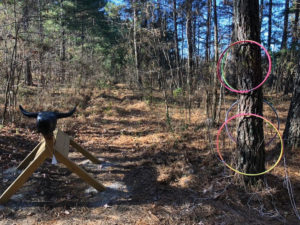
“Between how expensive the horses are, how expensive personnel is and the fact that we don’t bring in any income, their projects are extremely important. To get those kinds of projects done—and at no cost to us—is really pretty major.”
Stutz and Butler says that, beyond the engineering work, they learned practical lessons from the project.
“We all now have the knowledge and capability to make an idea a physical product for a customer from start to finish,” Stutz says. “This skill set is something we can all take with us into our studies and careers after graduating.”
For Butler, one of the takeaways is working to address the client’s needs while taking into account the breadth of the project and how much it will cost.
“You can’t do that in a classroom,” he says. “You can learn all the math and everything, but you don’t really get to do the deal with the client and actually work on something in engineering, structurally, environmentally and everything.”
